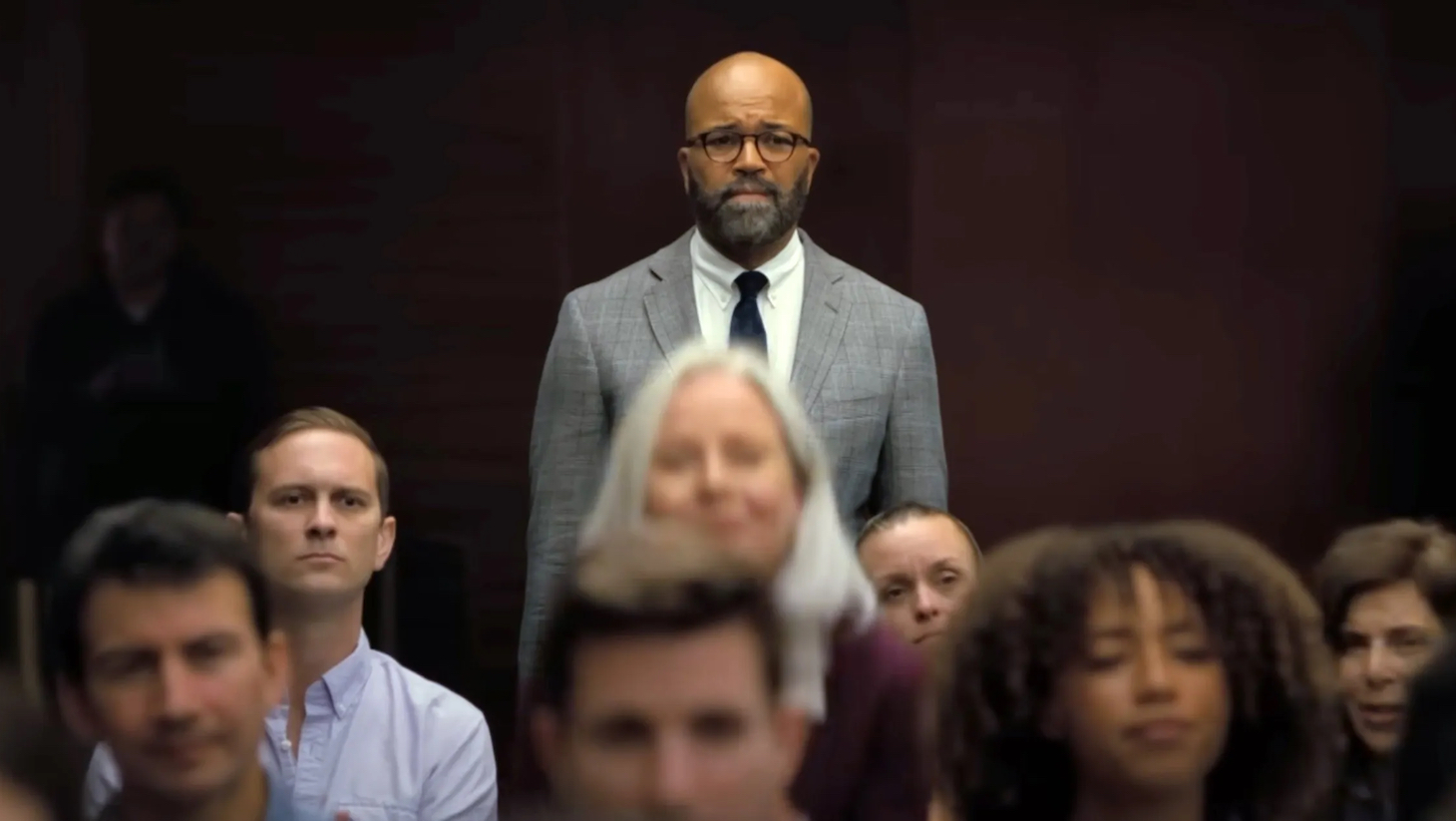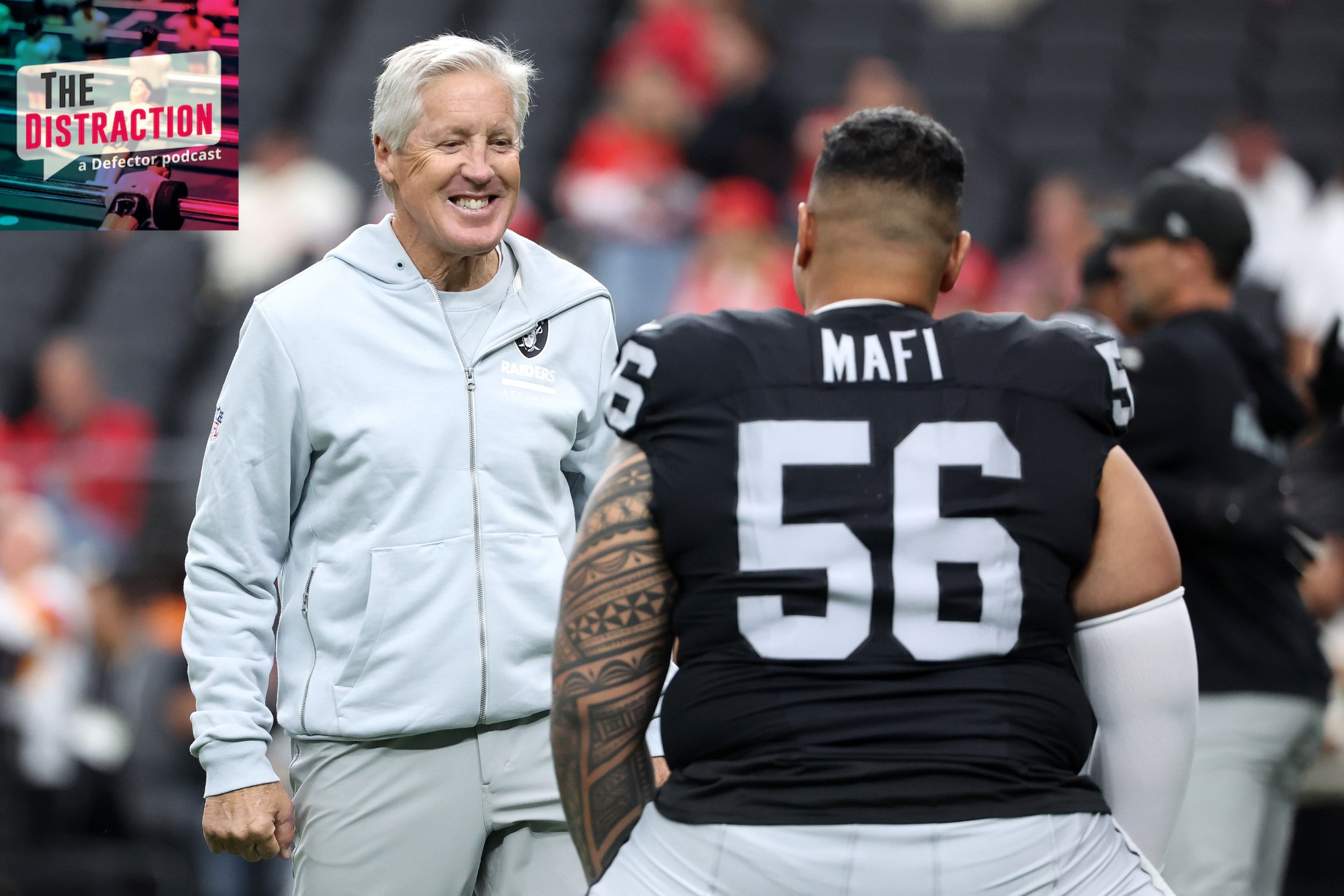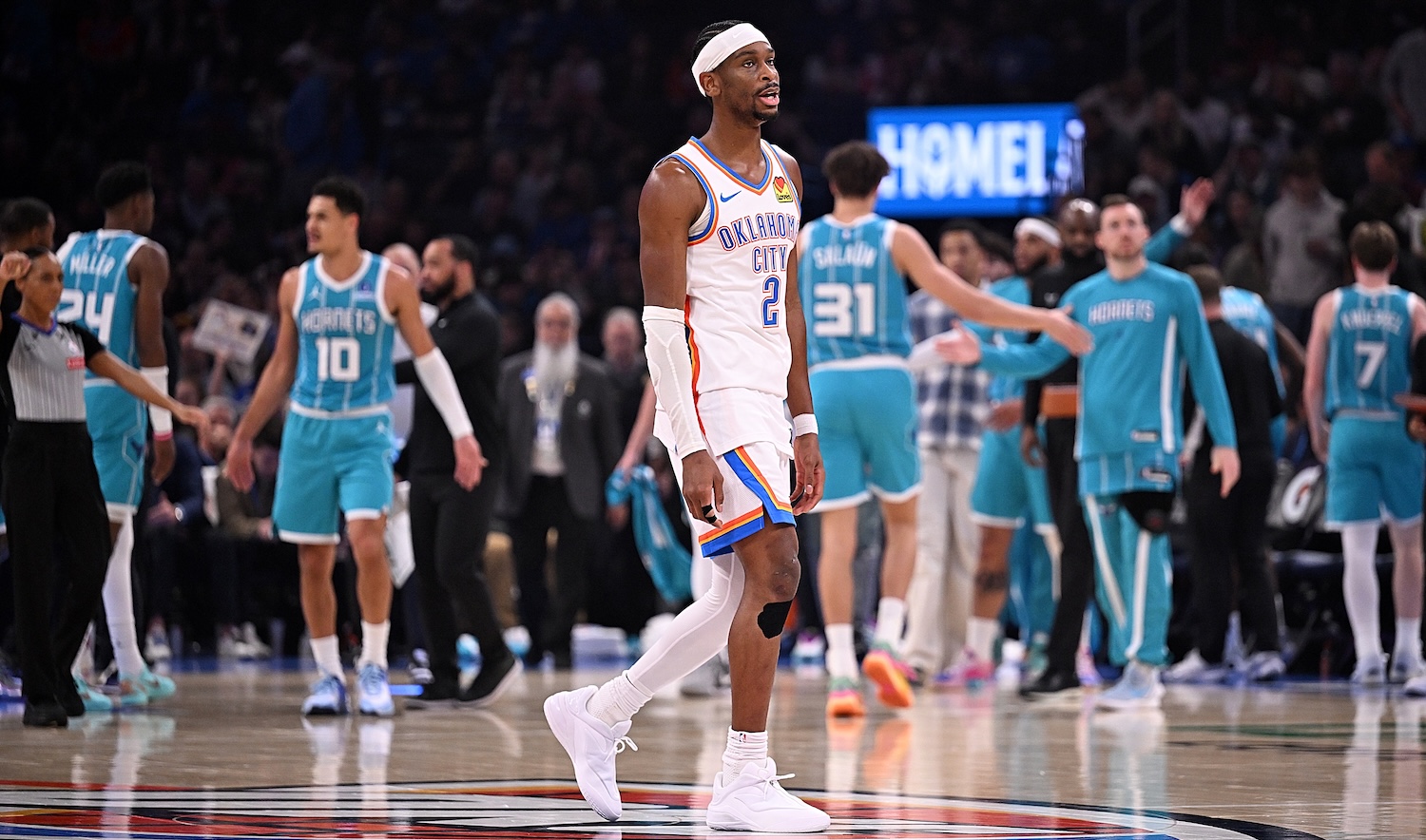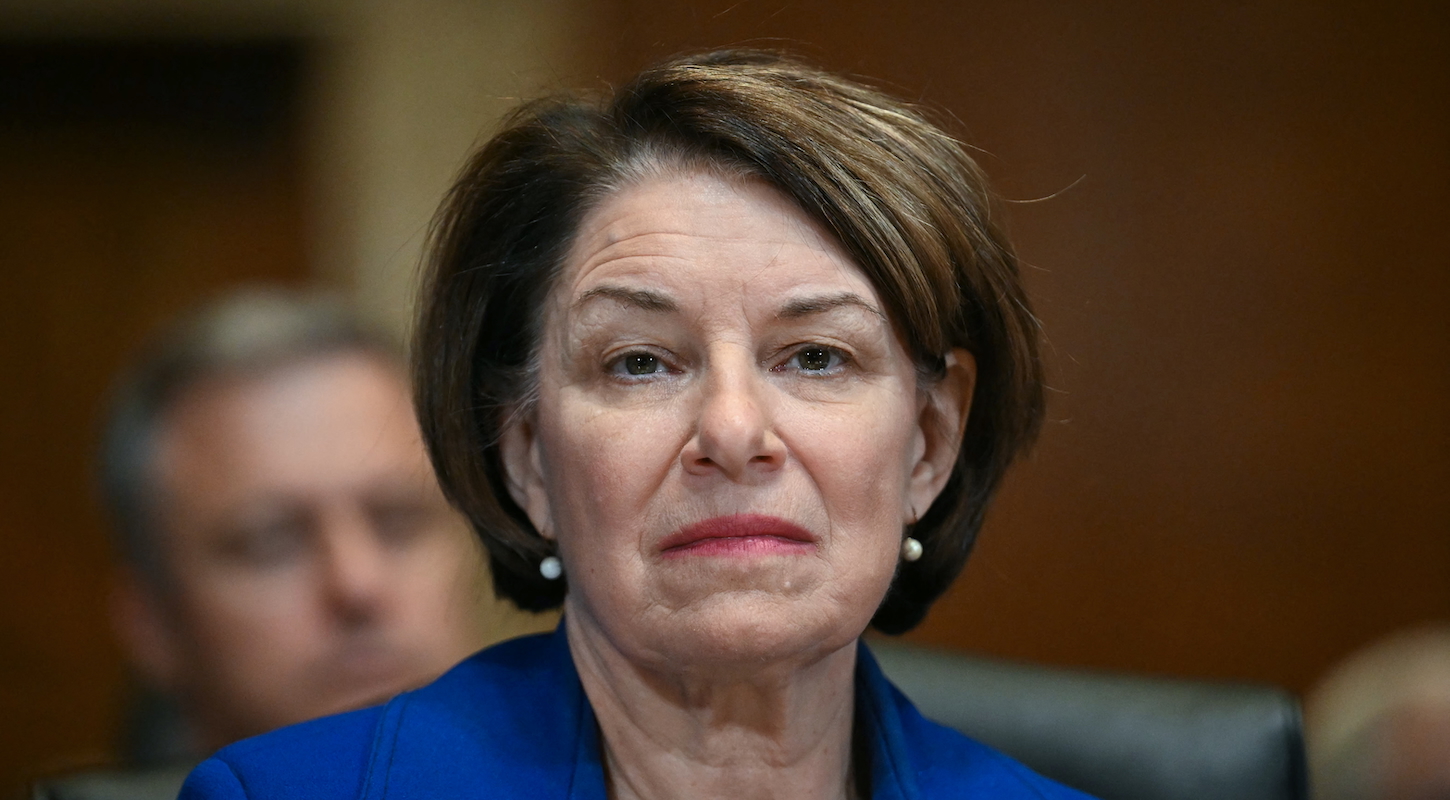We tell ourselves stories to feed our delusions. It’s an ugly world out there, and so many Americans prefer the easy way out. We genuflect to the guru and the influencer; we admire the charlatans who can captivate a crowd and turn a quick buck. We prefer the CliffsNotes to the book, and all the better if there’s a movie version. We talk around the obvious truths of our reality so doggedly that avoidance of and aversion to truth become the drivers of discourse. By the time we realize the easy way out is no way at all, we’re already fucked.
When I say “American” here, I’m not coding for “white.” Indeed, I mean American—we all suffer from this peculiar affliction to varying degrees. I probably am coding a bit for middle- and upper-middle-class folk regardless of race, as those who feel they have footing to lose are more apt to avoid anything that shakes the climbing wall.
The American aversion to reality and attendant addiction to delusion and spectacle have long been prevalent, as noted by myriad cultural critics. Didion declared “the dream was teaching the dreamers how to live”; Baldwin highlighted and decried the “illusion about America, the myth about America to which we are clinging which has nothing to do with the lives we lead.” The timeliness and applicability of their writing—every year I return to their essays, and many of the insights radiate with more urgency and relevance than ever—now strike me less as a marker of their brilliance and more an indictment of our collective cultural inertia.
Percival Everett’s novel Erasure is that sort of work for me: perpetually current in its insights, depressingly applicable across the years. It’s jarring, discomforting, dynamic, and irreverent. Most impressive of all, it bears the mark of legitimate art: It takes the risk of honesty and emerges from the painful process of self-sorting. The weight of Everett’s intellect is heavy on every page of the book, which manages to be a genre-defying masterpiece even as it wades through tried and true subjects like identity and class—the illusions to which we cling, and the artificial notions of life that have taught us how to live. I’ve mailed at least a dozen copies to friends over the years; I’ve been teaching the book in classrooms for over a decade.
I knew American Fiction was doomed to fail as an adaptation, if only because capturing a book as complex, experimental, philosophical, and so defined by interiority as Erasure requires the adapter and director to be formally audacious. Such an undertaking might suit a director like Yorgos Lanthimos, or Julius Onah, who helmed Luce. A first-time director with a background in writing for The Good Place? Color me skeptical.
Let me do away with any notion that I’m naïve about how Hollywood works. A film needs to make money, which requires broadening the potential audience; sacrifices are made in service to convention. I’m well aware. As such, I built in realistic expectations, and even some premeditated forgiveness for American Fiction. Still, I left the theater stunned by its cynicism and cowardice. It’s one thing for a film to veer from its source material; it’s quite another for that veering to swerve away from the very soul of the original, and in doing so to become nothing short of a moral failing.
The aversion to reality and difficult conversations is precisely the conceit of American Fiction, a dishonest pseudo-satire that lobs stones made of Styrofoam, yet still hides its hand. In her book The Prestige of Violence: American Fiction, 1962–2007, scholar and professor Sally Bachner notes the key to producing prize-winning literature is to flatter the sensibilities of the consumer without inducing culpability. If an author discusses delicate topics like war or domestic violence, it’s best to set such things in the past, or in a foreign country, so the reader can experience the rush of moral rectitude without feeling too discomfited by implications of their personal connection to it.
To that end, the villains in American Fiction vacillate between anachronistic and easy targets. Boyz n the Hood came out in 1991, for God’s sake, and Tyler Perry isn’t exactly a bold scapegoat. When the blaxploitation being satirized in the movie isn’t stuck in the 1990s, the problems are costumed as white dolts and doofuses—publishers, editors, writers, and filmmakers who are such caricatures that the white audience can laugh at them without feeling indicted. But while the movie is content to set up and then knock down its array of frail, antiquated pantomime villains, the equivalent figures and forces of our present time—the ones a braver story would've confronted head-on—go conspicuously ignored.
Take Adam Brody's character Wiley Valdespino, a despicable cracker of a movie producer who describes his approach to cinema as fusing genre with real-life pathos, whose whiteness and broadness disguise the fact that he sounds a little like Jordan Peele. Precious was a movie written, produced, and directed by black people. The pedantic, meretricious white student who takes issue with reading a racial slur symbolizes the contrived and impotent “sensitivity” made epidemic by DEI culture—a culture that has enabled a sizable swath of black grifters in service of maintaining a white status quo. The satirizing of the publishing industry is equally bizarre and outdated: In an era where Colson Whitehead has a pair of Pulitzers, Jesmyn Ward has two National Book Awards, Terrance Hayes is in Dove commercials, the MacArthur Fellows list is teeming with black writers, and Lisa Lucas spent years running the National Book Foundation, one is left to wonder what imaginary world director Cord Jefferson is taking to task, and to what end?
A modern critique worthy of Erasure's lineage would wrestle with how much of the exploitative art created in the past decade has been for them, by us. It would try to make sense of a landscape in which black “activists” often double as brand ambassadors, black “public intellectuals” keep churning out vapid pop culture discourse, and black “creatives” function as corporate mascots. It might interrogate how we fumbled the social momentum we had in the wake of George Floyd’s murder—that, in place of concrete change and uplift, we empowered a black managerial class that kept assuring us we were winning. It might dare to ask the question: Just how badly did we lose? As Bomani Jones pointed out to me: “Four years ago, the world was wide open. And some people really came up. But the people who truly benefited from that time look a lot like the people in this movie, and the people who made the movie.”
Where Erasure wrestled with the Du Boisian concept of double-consciousness in an updated context, American Fiction is satisfied being The Lolz of Black Folk. We get standard quips about the Hamptons; Monk (Jeffrey Wright) declares “I don’t even believe in race” as a taxi drives past his extended arm; a white woman has thin lips and looks like a bad kisser; one character's will reads "hopefully I expired under the heaving thrusts of a sweaty Idris Elba. Or, perhaps in a less dignified manner, under the heaving thrusts of a sweaty Russell Crowe." The dialogue scans as an accumulation of talking points and catchphrases that have their roots not in lived experience but in replicating a replication of lived experience. Social media is teaching the creatives how to create.
In the social media era, the superficial markers of black culture have been so successfully co-opted by mainstream culture that our very notion of black identity has become flattened where it was once double-edged. So maybe it shouldn't be a surprise that American Fiction is plagued by sterility where one would expect subversiveness, an effect of flattering the white audience where the aim should be to unsettle it. In that way the film functions a lot like a repackaged, highfalutin version of the lowest common denominator, ultra-commodified art Erasure lampoons; it’s a spectacle that engenders feelings without any need for self-reflection.
Incidentally, a New York Times review said (gushingly) about Sapphire’s Push, the novel upon which Precious was based, it “sails on the strength of pure, stirring feeling.” Baldwin’s insight into sentimentality seems especially germane here: “Sentimentality, the ostentatious parading of excessive and spurious emotion, is the mark of dishonesty, the inability to feel; the wet eyes of the sentimentalist betray his aversion to experience, his fear of life, his arid heart; and it is always, therefore, the signal of secret and violent inhumanity, the mask of cruelty.” Or, as Monk says in Erasure about best-selling airport books, "Although I did not find any depth of artistic expression or any abundance of irony or play with language or ideas, I found them well enough written."
None of the aforementioned is especially sinful. Schmaltzy cinema about race traditionally tests well with audiences, and has long been award-show fodder. What makes American Fiction a cynical and cowardly moral failing is the peculiar logic of its editorial decisions regarding what it adds and removes from its source material.
By removing almost all the complexity and moral quandaries that make Erasure such a provocative and unsettling read, American Fiction strips out the novel's soul, and banalizes Everett’s insights into the human condition and his critiques of perception. In Erasure, Monk’s father was in love with a white woman, tortured by societal constraints and personal expectations, and locked in a loveless marriage. He had a mixed-race lovechild, whose white cousin happened to be a neo-Nazi. American Fiction paints Monk’s father simply as a serial philanderer, neutering Everett’s framing of interracial romantic relationships and the absurdity of how we regard them. “I once saw dad kiss a white woman with thin lips,” it was decidedly not.
In Erasure, Monk’s sister, Lisa, doesn’t die of a sudden heart attack; she’s murdered by an anti-abortion activist who stalked her and shot her in cold blood. Monk’s mother, Agnes, doesn’t dance in joyous harmony with gay men on a beach at Lorraine’s wedding; she misses the wedding entirely. Their relationship is fraught with tension, because they have come to resent each other. Lorraine is, after all, their servant, not family. There’s an explicit examination of intra-racial class dynamics prevalent in the book that American Fiction entirely elides, and the choice feels telling.
Then there’s the strangest and most cynical updating of the book: Juanita Mae Jenkins, author of We’s Lives In Da Ghetto, is humanized. She is given a new name, flesh, a voice, and a seat at the table—none of which is the case in Erasure. It’s a counterintuitive change to the source material, and serves no real dramatic purpose, but it does serve a diabolical one. Sintara Golden is presented not as a vile blaxploitation author, but rather as a thoughtful foil to Monk, every bit his peer on a literary prize jury. They even find common ground in their shared critiques of Monk’s parodical novel. During the film’s denouement, when Monk asks questions of Golden that should be central to the film, Jefferson backs away from any real interrogation of integrity, exploitation, role playing, and grift. Golden, played by Issa Rae (an intriguing bit of meta casting?), has rejoinders at the ready; her half-baked rationalizations, moral relativism, and false equivalencies (the one about Bret Easton Ellis is particularly sophistic) seem to confound Monk, who, we are left to infer, might simply be sexist and envious of her success. The only credible, smart thing in the entire scene—as anticlimactic and circular a philosophical analysis as any movie in recent memory has provided—is the Lauren Michele Jackson book in Golden's hand. The message of the film becomes: Who can really say what’s right or wrong? Check your privilege. Support black creatives. It’s a smorgasbord of hollow Twitter proverbs. And fuck if it isn’t a hell of a thing to watch black people run Yakubian game. In the words of Suga Free: I checked my receipt, and I didn’t buy any of your bullshit.
The issue in Erasure isn’t that We’s Lives In Da Ghetto sells a lot of copies and inspires envy—it’s that the book is offensive garbage. By repositioning it and its author as credible and misunderstood, the film fundamentally alters the integrity of the book’s assessment of race and audience, and the central question of who has the right to tell what stories. In Erasure, My Pafology a.k.a. Fuck is actually a better book than We’s Lives In Da Ghetto. It runs parallel to the main narrative of Erasure: a fractured relationship with a father and a society that holds black identity in contempt lead to an ultimate schism in the protagonist. Van Go and Monk are warped doubles.
In addition to clarifying the duality between these seemingly incompatible black protagonists, My Pafology riffs on Native Son (though with a distinct intra-racial class element), so that Monk’s parodical novel becomes a text in conversation with a historical text, within another text. Where Erasure is multidimensional and ambitious, American Fiction is flat and intellectually timid.
Erasure wasn't about how white people perceive black people as much as it contemplated how black people conceive of and present themselves, and those who look like them. It’s an interrogation of the performance of identity and the implication of audience, and how both serve to reduce and ultimately erase an individual’s dignity and humanity. A crucial scene in the novel finds Monk in the waiting room of his sister’s clinic, underestimating the intellectual capacity of a woman implied to be a lower-class single mother, with “curling, blue fingernails.” She’s a high-school dropout, but she discusses Their Eyes Were Watching God and Cane with a poignancy that shames Monk for his narrow assumptions about her. The point of Erasure isn’t that we need more books and films about upper-middle-class black people, but that any book or film worth a damn needs to confer humanity and dignity on its subject, regardless of their station in life.
Any real art finds its level by meeting humans and life on their own terms. In place of that sort of probing, American Fiction gives you a movie about angst and love, a fantasy of good negro life so mired in sentiment it has no politic but the simplest judgment of the most obvious racism we can all agree is bad, and no depth outside of what we all need is more love in our lives. Implicit in a film like this—as with so much of the cinema, literature, and non-fiction by and about black people that has emerged post-George Floyd—is a participation trophy for the white, liberal audience: Kudos to you for watching; go tell a friend. Assuage your guilt for the price of a ticket; you're the good guys, after all.
What’s the point of an adaptation of Erasure that foregoes the audacious skewering of those who profit from self-involved and pandering art cloaked in bullshit “authentic” black identity, and cynically tied to racial uplift? The skeptical part of my mind wonders if these dreamers of Sintara Golden’s dream (to bastardize Didion) simply set out to justify the hustle. After suffering through Golden's mumbo jumbo about market demands and representation, I wanted to make the same query of Jefferson that Monk made of Coraline:
"May I ask you something I'm sure a lot of people ask you?"
"How do I feel about defending guilty people?"
"Yeah."
"I Iove it."
Despite hopes about social media’s potential to bring us clarity and boldness in discourse, in reality it has engendered conformity and cowardice. If a concept, cause, or person is easy to sort out, the takes on social media are loud, repetitive, relentless. But on a complicated issue that demands straying from the accepted script of talking points? That tends to sideline the loudest voices. The formula social media taught so many of us is to be as palatable as possible while striking a posture of subversion and rebellion. After a while, tribalism and boosterism replaced criticism, and a social Ponzi scheme dynamic took root: Clap for me, and I'll clap for you when it’s your turn. This was something I associated with white writers in MFA programs, who promoted each other and inflated their CVs via vanity presses and reading series—a culture of glad-handing and nepotism.
Popular black discourse is now defined by this dynamic, which has created a gridlock effect among black public intellectuals and “creatives,” who often compete to make self-evident points about the most convenient issues, and to clash fervently against the most extreme foils. Rather than attempt to create a radical art or articulate a radical politic, the goal is to convince you that the mundane is, indeed, radical. One of the significant things lost in this sort of structure is intra-group criticism, self-assessment. Intra-group criticism is the sort of thing that strengthens and sustains legitimate social, intellectual, and artistic movements; the lack thereof empowers grift.
And so the discourse suffers, as we’re left to sort through a mix of fluff (endless profiles of individual mascots, personal lifestyle choices like hairstyles dressed up as radical defiance of oppression, gossip about celebrity relationships treated as referendums on the state of gender relations) and ahistorical, sensational daytime TV fodder peddled as highbrow and societally momentous (the steamboat brawl in Alabama, the salacious sound bites from Katt Williams’s conversation with Shannon Sharpe). At some point the line between the lolz and the serious became indistinguishable. If anything from Williams’s sitdown in the Shay Shay Lounge stood out as salient, it was this pronouncement: Most comedians don't get booed enough.
Criticism, as Williams pointed out, sharpens talent. At its best, it’s a form of respect—and even, in some cases, love. We’ve lost that. It’s striking that so many black “creatives” and public intellectuals have eschewed intellectual rigor in favor of easily digestible, repeatable, and ultimately white-flattering buzz-phrases and concepts. Something as simplistic and deleterious as “Straight black men are the white people of black people” can start as a tweet from Rod Morrow, a shadow of an insight worth scrutinizing, then turn into a column in someone else’s hands, then spread like wildfire across social media until even white people are repeating this shallow nonsense. That’s not an insult to Rod, who I consider a friend, and who I respect. But we’ve got to be able to have honest and serious discussion without being so thin-skinned as to view every critique as a personal rebuke or a betrayal of the Black Excellence Industrial Complex.
Because the fact remains that white people are the white people of black people. And if we’re going to be serious about trying to extrapolate from that socioeconomic and sociohistorical dynamic who plays the role of “the white people of black people,” in terms of aspiring to white hierarchical status, the aping and exploitation of culture, the contempt for lesser-thans, and the cloying claims to allyship while dodging complicity … well, one could reach a Linton Kwesi Johnson-esque conclusion: Di black petty booshwah might just be the correct answer. The duplicitous folk who claim community while prioritizing personal gain over collective justice.
Bomani Jones recounted a telling story to me about a private screening he attended for a big-budget film, produced and directed by a successful black person. The audience was full of black members of the media and black social media influencers—as Jones put it, “Twitter prom.” Before the screening began, the audience was treated to a prerecorded video in which the director and one of the actors explained that the screening (and the movie) was really about us—about community, solidarity, and uplift. It was a cynical ploy, one that gives a potential critic a bias toward investment in the film’s success, and a hesitance to criticize it publicly.
That has been the great con of the post-George Floyd era: So many opportunists posing as garden-variety creatives, activists, intellectuals, and DEI experts sold the idea that the success of their individual pursuits should be seen as a referendum on collective black uplift, that an assertion of black identity is part and parcel of what makes a piece of art or an essay excellent, worth your attention, and deserving of your money. Rather than a meaningful discourse in which we examine how race and art move in tandem, we’ve seen the creation of a crude capitalistic “representation” assembly line that cheapens the seriousness and stakes of both.
But here we get insight into something we all know, high and low negro alike (word to Langston Hughes): The bulk of the white audience doesn’t know how inaccurate or cynical any of this is, because they don’t care. They’re there to be there. At the lecture, in the theater, and in the book club. The content of the film/book/talk, as well as its accuracy, integrity, and conviction are largely if not entirely irrelevant.
Three years back a white colleague suggested we co-teach a class on race, and we met for lunch to discuss books for a potential syllabus. Among the books he suggested was a recent book of essays by a black author that I’d read and found poorly written, without any notable insight. I asked why he expected me to teach a book that would undermine the seriousness of the class, and he told me he was surprised I felt that way, given the quality of the book. I explained the problems with a couple of the essays I recalled, and used Google to bring up an excerpt. He read it, seemed stunned by the quality of the work, and then admitted: “I hadn’t actually read the book.” American Fiction might be the perfect movie for him.
When it comes to racial justice and equity, white people are usually just playing games with each other. Our art and lives are simply fodder. Who is the better, less complicit white? Who went to see the right film, and read the right book, as recommended by the seemingly in-the-know white New York Times aficionado, or the acceptably bland negro with the bad haircut that aims for edgy? And how might I use this—like my yard signs and T-shirts—to do the absolute least while claiming the moral high ground?
Baldwin saw this clearly, nearly 70 years ago, in 1955:
The protest novel, so far from being disturbing, is an accepted and comforting aspect of the American scene, ramifying that framework we believe to be so necessary. Whatever unsettling questions raised are evanescent, titillating; remote, for this has nothing to do with us, it is safely ensconced in the social arena, where, indeed, it has nothing to do with anyone, so that finally we receive a very definite thrill of virtue from the fact that we are reading such a book at all.
They emerge for what they are: a mirror of our confusion, dishonesty, panic, trapped and immobilized in the sunlit prison of the American dream. They are fantasies, connecting nowhere with reality, sentimental.






